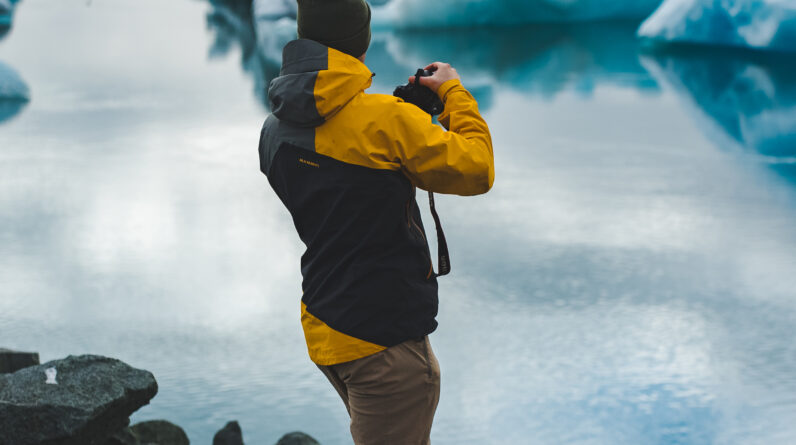
Are you ready to embark on your next kayaking adventure, but unsure of how to transport your beloved kayak? Look no further than “The Ultimate Guide: How to Haul Kayaks.” In this comprehensive article, you’ll discover the essential tips and tricks for safely and efficiently transporting your kayak to and from your destination. Whether you’re a beginner or a seasoned paddler, this guide will provide you with the knowledge and confidence to tackle any hauling challenge that comes your way. Say goodbye to the hassle and worry of transporting your kayak, and get ready to hit the water with ease.

Choosing the Right Vehicle
When it comes to hauling kayaks, it’s essential to choose the right vehicle for the job. One of the crucial factors to consider is the weight capacity of the vehicle. You’ll want to make sure that your vehicle can comfortably handle the weight of your kayaks along with any additional gear you’ll be carrying.
Another aspect to evaluate is the roof type of your vehicle. Certain vehicles, such as SUVs or trucks, may come equipped with built-in roof racks or bars that can provide a sturdy platform for securing your kayaks. On the other hand, vehicles with a soft-top or convertible roof may not be the best option for hauling kayaks securely.
Before hitting the road, it’s important to check if your vehicle has roof racks installed. Roof racks are an excellent addition to any vehicle as they provide a stable and secure platform for transporting kayaks. If your vehicle doesn’t have roof racks, don’t worry! There are alternative options available, such as foam blocks or cradles, that can be used to safely transport your kayaks.
If your vehicle doesn’t have the capacity to carry your kayaks on the roof, another option to consider is using a trailer or utilizing the truck bed. Both of these alternatives can provide ample space to transport your kayaks securely. However, it’s crucial to properly secure your kayaks in these areas to ensure they don’t shift or become damaged during transport.
Preparing Your Kayaks
Before loading your kayaks onto your vehicle, it’s essential to perform a thorough check for any damage. Look out for any cracks, dents, or signs of wear and tear. It’s crucial to address any issues before hitting the road to prevent further damage and ensure the safety of your kayaks.
Once you’ve inspected your kayaks and determined that they are in good condition, it’s time to give them a proper cleaning. Remove any dirt, sand, or debris that may have accumulated on the kayaks. Cleaning your kayaks will not only keep them looking great but also prevent any contamination when transporting them to different water bodies.
While preparing your kayaks, it’s also important to secure loose items such as paddles, life jackets, or any other gear you’ll be carrying. These items should be properly stowed away inside the kayaks or in separate compartments to prevent them from flying off while driving.
To provide an extra layer of protection, consider using padding or foam blocks to cushion your kayaks during transportation. This will help prevent any scratches or damage to the kayaks’ surface and ensure they arrive at your destination in pristine condition.
Gathering the Necessary Equipment
To securely haul your kayaks, you’ll need to gather the necessary equipment. Ratchet straps are a must-have and are used to tightly secure the kayaks to your vehicle’s roof. Make sure to choose straps that are strong and have a high load capacity to withstand the weight of your kayaks.
In addition to ratchet straps, you’ll also need bow and stern lines to provide additional stability. These lines are attached to the front and back of the kayaks and then secured to your vehicle’s bumper or tow hooks. Bow and stern lines help prevent any movement or shifting of the kayaks while driving.
Paddle holders are another important piece of equipment to consider. These convenient accessories securely hold your paddles and prevent them from sliding around during transport. Paddle holders can be attached to your vehicle or used in combination with other equipment, such as foam blocks or cradles.
Depending on your specific needs and the type of vehicle you own, you may also require extra padding or foam blocks. These provide an extra layer of cushioning and stability while transporting your kayaks. Foam blocks can be placed under the kayaks to distribute weight evenly and prevent any damage to the roof of your vehicle.
Loading the Kayaks
When it’s time to load your kayaks onto your vehicle, proper positioning is key. Start by aligning the kayaks parallel to each other on the roof of your vehicle, ensuring they are evenly spaced to distribute the weight properly. This will help maintain stability while on the road.
Using foam blocks or cradles can significantly enhance the stability and safety of your kayaks during transport. These accessories create a solid base for your kayaks and prevent any shifting or movement during the journey. Place the foam blocks or cradles in the appropriate positions to provide a secure and level surface for your kayaks.
If your vehicle is equipped with kayak roof racks, take advantage of them to secure your kayaks. Place the kayaks onto the roof racks, ensuring they are properly aligned with the racks’ grooves or saddles. This will provide added stability and prevent the kayaks from sliding or shifting while in transit.
Once your kayaks are positioned correctly, it’s time to secure them with straps. Begin by threading the straps through the kayak roof racks or around the foam blocks. Pull the straps tightly to ensure a secure fit, making sure the kayaks are firmly attached to your vehicle’s roof.

Securing the Kayaks
After the kayaks are loaded and strapped onto your vehicle, it’s essential to properly secure them to ensure they remain in place throughout your journey. Begin by tightening the straps until they are snug. You want the kayaks to be secure but not overly tight, as this could potentially damage the kayaks or put unnecessary strain on your vehicle’s roof.
In addition to the straps, it’s crucial to use bow and stern lines to provide extra stability. These lines will anchor your kayaks to the front and back of your vehicle, preventing any forward or backward movement. Attach the lines to secure points on the kayak and connect them to your vehicle’s bumper or tow hooks to create tension.
To ensure the stability of your loaded kayaks, take a moment to check that they are secure and properly balanced. Gently shake the kayaks to assess if they move or shift. If you notice any movement, readjust the straps and lines as necessary until the kayaks are stable and firmly secured in place.
Before hitting the road, it’s always a good idea to test the kayak’s position by giving it a gentle push or tug. This will allow you to verify that the kayaks are securely fastened and won’t come loose during transit.
Driving with Kayaks
When driving with kayaks on your vehicle, it’s important to keep a few things in mind to ensure a safe and smooth journey. Observe any weight restrictions specified by your vehicle’s manufacturer to prevent any damage to your vehicle or the kayaks.
Drive carefully and attentively, especially when hauling kayaks. Be mindful of the extra height and weight added to your vehicle, which may affect your visibility and handling. Take turns and corners slowly and make sure to leave extra stopping distance to account for the added weight.
Avoid driving at high speeds or making sudden maneuvers, as this can put unnecessary stress on your vehicle, the kayaks, and the straps. Smooth and controlled driving will help ensure the safety of your kayaks and prevent any accidents or damage during transit.
Periodically check the kayaks while driving to ensure they are secure and haven’t shifted. If you notice any signs of movement or instability, find a safe spot to stop and make any necessary adjustments to tighten the straps or lines.

Unloading the Kayaks
Once you arrive at your destination, it’s time to unload your kayaks safely and efficiently. Start by removing the straps and securing any loose items that may have shifted during the journey. Stowing these items away before unloading will prevent any unnecessary accidents or damage.
If you used kayak roof racks, carefully remove them from your vehicle. Follow the manufacturer’s instructions or guidelines to ensure a proper and safe removal process. Typically, roof racks can be easily detached, allowing you to free up space on your vehicle for other purposes.
When unloading the kayaks, take your time and do it with caution. Gently lift the kayaks off the vehicle’s roof and lower them down to the ground. Avoid dropping or dragging them, as this can cause damage to both your kayaks and the surface you’re placing them on.
Properly storing your kayaks after unloading is crucial to their longevity. Make sure to rinse off any saltwater or debris from the kayaks and allow them to fully dry before storing them. Store them in a clean, dry area away from extreme temperatures and direct sunlight to prevent any warping or damage.
Alternative Options: Trailers and Truck Beds
While roof hauling is a popular method, alternative options are available, such as using a kayak trailer or utilizing a truck bed. Using a kayak trailer can be an excellent choice if you frequently transport multiple kayaks or have a vehicle that isn’t suitable for roof hauling. Trailers provide a secure and convenient way to transport your kayaks.
If you have access to a truck bed, it can also serve as a suitable option for hauling kayaks. However, it’s essential to take proper precautions to secure the kayaks in the bed to prevent any movement or damage during transport. Utilize ratchet straps, foam blocks, or other secure methods to hold the kayaks securely in place.
When considering these alternative options, it’s important to keep a few things in mind. Ensure that the trailer or truck bed you’re using has the appropriate weight capacity to support the kayaks. Additionally, always use proper tie-down points and secure the kayaks tightly to prevent any shifting or damage.
Safety Tips
Safety should always be a top priority when hauling kayaks. Here are some important safety tips to keep in mind:
Practice loading and unloading your kayaks before your first trip. This will help familiarize yourself with the process and ensure efficient and safe handling.
Secure your kayaks properly when high winds are expected. Strong gusts can cause significant movement and potentially damage the kayaks or your vehicle. Consider using additional straps or lines for added stability in windy conditions.
Be mindful of overhead obstacles such as low bridges, trees, or parking garages. Ensure your loaded kayaks are within the height restrictions of your route to prevent any accidents or damage.
Pay attention to height restrictions in areas such as drive-thrus or underground parking lots. Always be aware of the height of your loaded vehicle to avoid getting stuck or causing damage to property.
Additional Tips and Considerations
In addition to the main guidelines for hauling kayaks, here are some additional tips and considerations to enhance your experience:
Always check local regulations and permits when transporting kayaks. Different areas may have varying requirements that you need to be aware of to avoid any legal issues.
Consider the weather conditions when planning your kayak hauling trip. Strong winds, rainstorms, or extreme temperatures can affect the safety and condition of your kayaks. Prepare accordingly and make adjustments to your plans if necessary.
Investing in kayak insurance can provide an added layer of protection and peace of mind. It can help cover any damages or losses that may occur during transport or while the kayaks are stored.
Choose reliable tie-down points for securing your kayaks. Avoid using weak or fragile attachment points that may break or become loose during transport. Opt for sturdy areas on your vehicle or utilize aftermarket tie-down points if needed.
By following these comprehensive guidelines and tips, you’ll be well-prepared to haul your kayaks safely and securely. Remember to always prioritize safety and take the necessary precautions to protect your kayaks and ensure an enjoyable kayaking experience wherever your adventures may take you.









